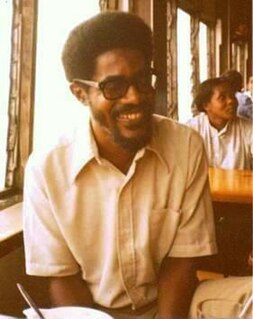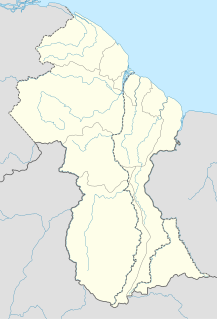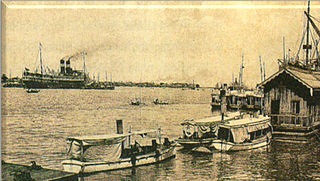The recorded history of Guyana can be dated back to 1466, when Guyana de Ojeda's first expedition arrived from Spain at the Essequibo River. The history of Guyana has been shape by the participation of many national and ethnic groups, as well as the colonial policies of the Spanish, French, Dutch and British. The African slave rebellions in 1763 and 1823 were seminal moments in the nation's history. Africans were enslaved and transported to Guyana a slaves; on the other hand, East Indians came as indentured labourers. Guyana's recent history is characterized in particular by the struggle to free itself from colonial rule, and from the lingering effects of colonialism.
Guyanese culture reflects the influence of Indian, African, Amerindian, British, Portuguese, Chinese, and Dutch cultures. Guyana is one of a few mainland territories of South America that is considered to be a part of the Caribbean region. Guyanese culture shares many commonalities with the cultures of islands in the West Indies,

Walter Anthony Rodney was a prominent Guyanese historian, political activist and academic. He was assassinated in 1980.
A Portuguese Guyanese is a Guyanese whose ancestors came from Portugal or a Portuguese who has Guyanese citizenship.

The Oilfields Workers' Trade Union or OWTU is one of the most powerful trade unions in Trinidad and Tobago. Currently led by Ancel Roget, the union was born out of the 1937 labour riots, the union was nominally led by the imprisoned TUB Butler but was actually organised by lawyer Adrian Cola Rienzi. The union was established on July 25, 1937, and formally registered on September 15. The first meetings were held in Fyzabad, and the first official headquarters were established on Coffee Street, San Fernando.
Martin Wylde Carter was a Guyanese poet and political activist. Widely regarded as the greatest Guyanese poet, and one of the most important poets of the Caribbean region, Carter is best known for his poems of protest, resistance and revolution. Carter played an active role in Guyanese politics, particularly in the years leading up Independence in 1966 and those following immediately after. He was famously imprisoned by the British government in Guyana in October 1953 under allegations of "spreading dissension", and again in June 1954 for taking part in a PPP procession. Shortly after being released from prison the first time, Carter published his most well-known poetry collection, Poems of Resistance from British Guiana (1954).
The Berbice slave uprising was a slave revolt in Guyana that began on 23 February 1763 and lasted to December. It is seen as a major event in Guyana's anti-colonial struggles, and when Guyana became a republic in 1970 the state declared 23 February as a day to commemorate the start of the Berbice slave revolt.

Enmore is a village in the Demerara-Mahaica region along the coastal belt of Guyana. It is about two square miles (5.1 km2) in size and has a multi-ethnic population of about 8,000, with large concentrations of Indo-Guyanese. Enmore is known for the Enmore Martyrs, who were slain during a 1948 labour dispute.
Jan Lowe Shinebourne, also published as Janice Shinebourne, is a Guyanese novelist who now lives in England. In a unique position to be able to provide an insight into multicultural Caribbean culture, Shinebourne's is a rare and distinctive voice : She grew up on a colonial sugar plantation and was deeply affected by the dramatic changes her country went through in its transition from a colony to independence. She wrote her early novels to record this experience.

Enterprise is a village in the Demerara-Mahaica region along the coastal belt of Guyana. It is about two square miles in size and has a population of about 12,000. It is located about 14 miles (23 km) southeast of the capital city Georgetown. This small community is flanked by Bachelors Adventure and a little further, Enmore to the east; Strasthpey on its west; Melanie Damishana and the Atlantic Ocean sits to the North. Some of the country's largest sugarcane fields are just beyond its southern horizon.
The British West Indian labour unrest of 1934–39 encompassed a series of disturbances, strikes and riots in the United Kingdom's Caribbean colonies. These began as the Great Depression wore on and ceased on the eve of World War II. The unrest served to highlight inequalities of wealth, led the British government to attempt a solution to the problem, and in some cases spurred the development of indigenous party politics that would lead to self-government and independence in the postwar period.

Guyanese people are people identified with the country of Guyana, which is located on the northern coast of South America and is bordered by the Atlantic Ocean, Brazil, Venezuela and Surinam. Geographically, Guyana is part of the South American mainland, however it is much more culturally similar to the nearby island nations of the Caribbean such as Trinidad and Tobago, Barbados, Saint Vincent and the Grenadines and Grenada with respect to culture. In fact, Guyana is considered a Caribbean country even though it is not an island nation located in the Caribbean Sea, as are most Caribbean nations.
Sir Frederick Mitchell Hodgson was a British colonial administrator who was Governor of the Gold Coast (1898–1900), Barbados (1900–04) and British Guiana (1904–11).

The 1969 Curaçao uprising was a series of riots on the Caribbean island of Curaçao, then part of the Netherlands Antilles, a "land" English: country in the Kingdom of the Netherlands with partial autonomy. The uprising took place mainly on May 30, but continued into the night of May 31–June 1, 1969. They arose from a strike by workers in the oil industry. A protest rally during the strike turned violent, leading to widespread looting and destruction of buildings and vehicles in the central business district of Curaçao's capital, Willemstad.
The history of the Jews in Guyana began in the mid-1600s, when Jewish settlers arrived in the Dutch colony of Essequibo, the forerunner of what became British Guiana and today's Guyana. In 1658, the Dutch agreed with David Nassy to establish a colony of Jews on the Pomeroon River, which flourished, becoming a prized possession of the Dutch, until its destruction in 1666 by an incursion by the English from Barbados under Major John Scott. The Jews of Pomeroon (Bowroom) fled, following the destruction of their colony, mostly to Suriname, where they were granted unprecedented religious freedoms.

The 1930 Rangoon riots were a pair of race riots between Indian dockworkers and Burman labourers. The first broke out on 26 May near the Rangoon docks. It spread to nearby districts with high Indian populations and resulted in over one hundred killed and about one thousand injured. The second, a prison riot, began on 24 June in Rangoon Central Jail, where the staff was predominantly Indian and the inmates overwhelmingly Burman. The riots were overshadowed by the Saya San rebellion that erupted in December that year.







